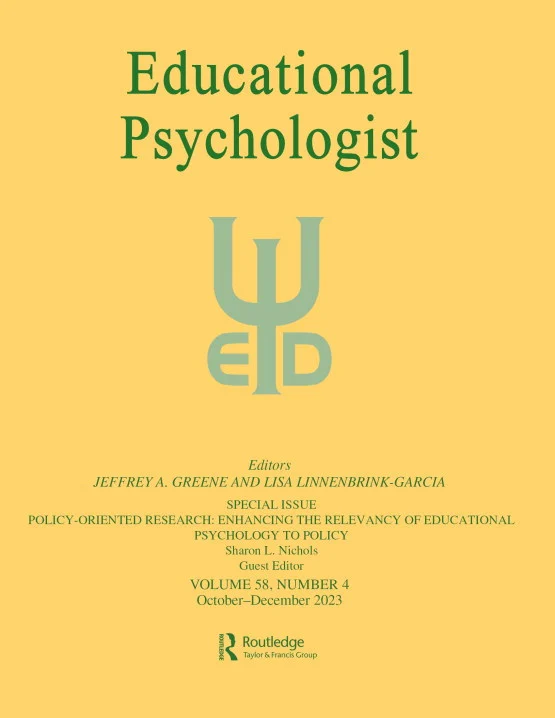使用状态空间网格来分析师生之间的互动
IF 11.4
1区 心理学
Q1 EDUCATION & EDUCATIONAL RESEARCH
引用次数: 9
摘要
在这篇文章中,我们解释了我们的探究世界观如何影响我们用来更好地理解课堂过程和变化的一种方法,即状态空间网格(ssg)。我们描述了我们的方法来衡量一个基本的课堂过程,即师生互动,以及它对有价值的教育成果,学生参与的影响。根据复杂动态系统理论,我们说明了ssg在研究教师观察教学实践与学生观察参与之间的稳定性和变化方面的作用。在两个教室中观察到的3年互动的例子表明,ssg使我们能够分析特定的师生“系统”是如何以及为什么发展的,产生了学生参与的最佳和非最佳模式。结论包括ssg对我们的研究问题和教育心理学研究的好处。本文章由计算机程序翻译,如有差异,请以英文原文为准。
Using state space grids to analyze teacher–student interaction over time
Abstract In this article, we explain how our inquiry worldview informs one methodological approach we have used to better understand classroom processes and change, State Space Grids (SSGs). We describe our approach to measuring a fundamental classroom process, that of teacher–student interaction, and its influence on a valued educational outcome, student engagement. Drawing from Complex Dynamic Systems theory, we illustrate the affordances of SSGs to study stability and change in teachers’ observed instructional practices in relation to students’ observed engagement. Examples from observed interaction over 3 years in two classrooms show that SSGs enabled us to analyze how and why particular teacher–student “systems” developed, producing optimal and non-optimal patterns for student engagement. Conclusions involve the benefits of SSGs for our research questions and research in educational psychology.
求助全文
通过发布文献求助,成功后即可免费获取论文全文。
去求助
来源期刊

Educational Psychologist
Multiple-
CiteScore
19.10
自引率
3.40%
发文量
16
期刊介绍:
The Educational Psychologist is a scholarly journal dedicated to exploring the psychology of learning and instruction. Articles in this journal encompass a diverse range of perspectives, from examining psychological mechanisms to exploring social and societal phenomena related to learning and instruction. The journal publishes theoretical and conceptual articles, as well as reviews and meta-analyses, that significantly contribute to theory or advance the methods used to explore educational psychology. Emphasizing innovation and advancing understanding, the journal does not publish articles solely reporting the methods and results of empirical studies; instead, all submissions, including reviews and meta-analyses, must offer clear implications for advancing theory. In addition to regular articles, the journal features special issues that delve into important themes in educational psychology, along with focal articles accompanied by peer commentary.
 求助内容:
求助内容: 应助结果提醒方式:
应助结果提醒方式:


